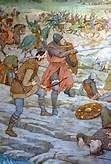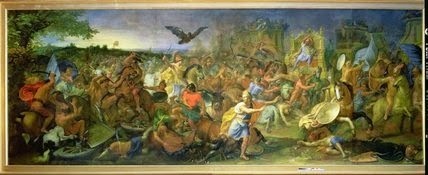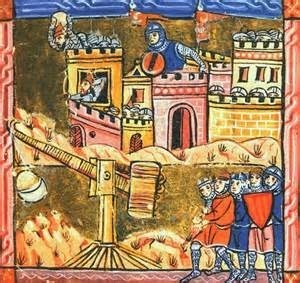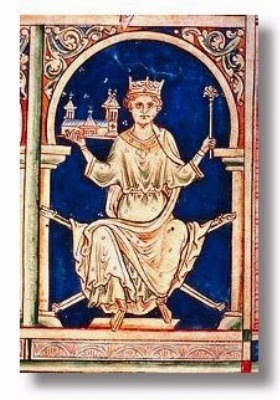MaryAnn Bernal's Blog, page 232
October 3, 2014
HALLOWEENPALOOZA HAS BEGUN!

BREATH TAKING: Kim Scott
Nevermind about the zombie chasing you! The zombie apocalypse can wait because this is REALLY important and what you’ve been waiting for! It’s Daily Giveaway Time. So nail the door shut, put out some wolfbane and sit a spell. Then enter the contest so you can do it all over again!
To enter the contest, go to Halloweenpalooza daily giveaway
Breath TakingKim Scott
 I sat with my feet up on the desk, gazing out the window. For weeks, I had been working seventy hours a week to complete my project. At last it was finished. The result far surpassed my expectations. The meeting with the client was minutes away, and I was fighting to contain my excitement. They would be waiting in the conference room. My boss, Jay Simmons would be seated at the head of the massive table. The clients, dressed in black Armani, would be lined up along the wall. Mitch Kingsley preferred to stand, and his team stood with him. My co-workers sat along the far side of the table. I wasn’t worried. While my co-workers were quaking in their seats, I would be cool and confident. It was time to enter the big room. I jumped up and grabbed the folder with the presentation. It was go time! Read more at: Breath Taking
I sat with my feet up on the desk, gazing out the window. For weeks, I had been working seventy hours a week to complete my project. At last it was finished. The result far surpassed my expectations. The meeting with the client was minutes away, and I was fighting to contain my excitement. They would be waiting in the conference room. My boss, Jay Simmons would be seated at the head of the massive table. The clients, dressed in black Armani, would be lined up along the wall. Mitch Kingsley preferred to stand, and his team stood with him. My co-workers sat along the far side of the table. I wasn’t worried. While my co-workers were quaking in their seats, I would be cool and confident. It was time to enter the big room. I jumped up and grabbed the folder with the presentation. It was go time! Read more at: Breath Taking 
Kim Scott Books

Published on October 03, 2014 05:58
History Trivia - Vercingetorix, leader of the Gauls, surrenders to the Romans under Julius Caesar
October 3

52 BC Vercingetorix, leader of the Gauls, surrendered to the Romans under Julius Caesar, ending the siege and Battle of Alesia.

42 BC First Battle of Philippi: Triumvirs Mark Antony and Octavian fought a decisive battle with Caesar's assassins Brutus and Cassius.
1283
 Dafydd ap Gruffydd, prince of Gwynedd in Wales, was executed for what from that time onwards would be described as high treason against the King. King Edward I ensured that Dafydd's death was to be slow and agonizing, and also historic; he became the first prominent person in recorded history to have been hanged, drawn and quartered, preceded by a number of minor knights earlier in the thirteenth century.
Dafydd ap Gruffydd, prince of Gwynedd in Wales, was executed for what from that time onwards would be described as high treason against the King. King Edward I ensured that Dafydd's death was to be slow and agonizing, and also historic; he became the first prominent person in recorded history to have been hanged, drawn and quartered, preceded by a number of minor knights earlier in the thirteenth century.


52 BC Vercingetorix, leader of the Gauls, surrendered to the Romans under Julius Caesar, ending the siege and Battle of Alesia.

42 BC First Battle of Philippi: Triumvirs Mark Antony and Octavian fought a decisive battle with Caesar's assassins Brutus and Cassius.
1283
 Dafydd ap Gruffydd, prince of Gwynedd in Wales, was executed for what from that time onwards would be described as high treason against the King. King Edward I ensured that Dafydd's death was to be slow and agonizing, and also historic; he became the first prominent person in recorded history to have been hanged, drawn and quartered, preceded by a number of minor knights earlier in the thirteenth century.
Dafydd ap Gruffydd, prince of Gwynedd in Wales, was executed for what from that time onwards would be described as high treason against the King. King Edward I ensured that Dafydd's death was to be slow and agonizing, and also historic; he became the first prominent person in recorded history to have been hanged, drawn and quartered, preceded by a number of minor knights earlier in the thirteenth century.
Published on October 03, 2014 04:36
October 2, 2014
Marble Door Revealed in Greek Tomb
by Rossella Lorenzi
 Archaeologists excavating the large and mysterious mound at the Kasta Hill site at Amphipolis, Greece, have unearthed a broken marble door, Greece’s Culture Ministry announced today.
Archaeologists excavating the large and mysterious mound at the Kasta Hill site at Amphipolis, Greece, have unearthed a broken marble door, Greece’s Culture Ministry announced today.
Made from marble brought from the island of Thasso, like most of the features uncovered so far in the underground space, the door fragments were found as archaeologists removed dirt from the second chamber.
Greek Tomb’s Female Forms Hint Olympias May Lie Within
According to Katerina Peristeri, the excavation’s director, the discovery leaves no doubt the structure is indeed a tomb dating to the time of Alexander the Great of Macedonia.
“Based on our findings, we are absolutely sure about our dating to the last quarter of the 4th century B.C.,” Peristeri said.
She hinted their dating relies on strong yet unpublished findings.
“We give information out to provide a clear picture [of the excavation]. However, not all the material is coming out in press releases,” Peristeri said.
3rd Room of Ancient Greek Tomb Revealed
Leading to the tomb’s third chamber, the marble door features a double row of dots down its center. The dots imitate nail heads, a feature common on Macedonian tomb doors.
A hinge was also discovered on the western side of the door.
“What is particularly unusual here is that the door was in two sections and hinged,” Dorothy King, a classical archaeologist not involved in the excavation, wrote in her blog.
“It was designed to open rather than merely be a ‘fake’ door designed to look like one as seen in most other Macedonian tombs,” she said.
Greek Tomb’s Female Sculptures More Than 12 Feet Tall
She noted that temples had doors that opened and closed, “but they tended to be either wood inlaid with ivory or wood covered in bronze,” King said.
Behind the two fully unearthed Caryatids (female statue) and in front of the door, Peristeri’s team also found bronze and iron nails. It’s not clear whether they belonged to the funerary carriage or something else.
As for the broken marble door, Peristeri believes it collapsed either as a result of the Bulgarian army’s bombing in 1913 or as the consequence of a severe earthquake that rumbled in Amphipolis in the 6th century A.D.
According to the archaeologists, Greece’s mystery tomb may hold more surprises.
It’s possible that a staircase or ramp exists behind the door in the third chamber, leading to a 6.5-foot-deep room.
Image: The marble door features a double row of dots meant to imitate nail heads (left); drawing showing the door design. Credit: Greek Ministry of Culture.
Discovery News

 Archaeologists excavating the large and mysterious mound at the Kasta Hill site at Amphipolis, Greece, have unearthed a broken marble door, Greece’s Culture Ministry announced today.
Archaeologists excavating the large and mysterious mound at the Kasta Hill site at Amphipolis, Greece, have unearthed a broken marble door, Greece’s Culture Ministry announced today.Made from marble brought from the island of Thasso, like most of the features uncovered so far in the underground space, the door fragments were found as archaeologists removed dirt from the second chamber.
Greek Tomb’s Female Forms Hint Olympias May Lie Within
According to Katerina Peristeri, the excavation’s director, the discovery leaves no doubt the structure is indeed a tomb dating to the time of Alexander the Great of Macedonia.
“Based on our findings, we are absolutely sure about our dating to the last quarter of the 4th century B.C.,” Peristeri said.
She hinted their dating relies on strong yet unpublished findings.
“We give information out to provide a clear picture [of the excavation]. However, not all the material is coming out in press releases,” Peristeri said.
3rd Room of Ancient Greek Tomb Revealed
Leading to the tomb’s third chamber, the marble door features a double row of dots down its center. The dots imitate nail heads, a feature common on Macedonian tomb doors.
A hinge was also discovered on the western side of the door.
“What is particularly unusual here is that the door was in two sections and hinged,” Dorothy King, a classical archaeologist not involved in the excavation, wrote in her blog.
“It was designed to open rather than merely be a ‘fake’ door designed to look like one as seen in most other Macedonian tombs,” she said.
Greek Tomb’s Female Sculptures More Than 12 Feet Tall
She noted that temples had doors that opened and closed, “but they tended to be either wood inlaid with ivory or wood covered in bronze,” King said.
Behind the two fully unearthed Caryatids (female statue) and in front of the door, Peristeri’s team also found bronze and iron nails. It’s not clear whether they belonged to the funerary carriage or something else.
As for the broken marble door, Peristeri believes it collapsed either as a result of the Bulgarian army’s bombing in 1913 or as the consequence of a severe earthquake that rumbled in Amphipolis in the 6th century A.D.
According to the archaeologists, Greece’s mystery tomb may hold more surprises.
It’s possible that a staircase or ramp exists behind the door in the third chamber, leading to a 6.5-foot-deep room.
Image: The marble door features a double row of dots meant to imitate nail heads (left); drawing showing the door design. Credit: Greek Ministry of Culture.
Discovery News

Published on October 02, 2014 16:06
Greek Tomb's Female Sculptures More Than 12 Feet Tall
 by Rossella Lorenzi
by Rossella Lorenzi The two female statues unearthed in the massive burial complex in Amphipolis, in Greece’s northeastern Macedonia region, tower more than 12 feet, according to pictures released today by Greece’s Culture Ministry.
Archaeologists led by Katerina Peristeri have fully revealed the finely carved marble pedestals on which each sculpture stands guarding the third chamber of the mysterious tomb.
“The pedestals continue the pattern of blocks lining the walls,” the Culture Ministry said.
Greek Tomb’s Female Forms Hint Olympias May Lie Within
It added the pedestal’s height is 1.40 meters (4.59 feet), width 1.36 meters (4.46 feet) and depth 72 centimeters (2.36 feet).
“The floor is raised by 7 centimeters (2.7 inches) and appears to have traces of blue paint,” the ministry said.
The total height of the pedestals and statues, known as Caryatid (pillars formed from sculptures of female figures common in Greek and Roman architecture) is an imposing 12 feet.
Image: The towering Caryatids. Credit: Greek Ministry of Culture.
Discovery News

Published on October 02, 2014 16:01
Skeletons Shed Light on Ancient Earthquake in Israel
 The golden dove shaped pendant between the skeleton remains at the basilica. Michael Eisenberg
The golden dove shaped pendant between the skeleton remains at the basilica. Michael Eisenbergby Rossella Lorenzi
Archaeologists have uncovered startling evidence of a severe earthquake that rumbled more than 1,700 years ago in the region of the Sea of Galilee, where Jesus performed most of the miracles described in the New Testament.
Skeletons crushed under a collapsed roof depicted a scenario of death and destruction caused by the earthquake that hit Israel and the region in 363 A.D.
Photos: Ancient Quake Revealed by Remains
The ancient city of Hippos, known as Sussita in Hebrew (both names mean “horse”) was among the most damaged centers. However, it was another powerful quake, on Jan. 18, 749, that razed the city, leaving it covered in debris, never to be resettled.
“While the evidence of the final destruction are clear and dramatic, those of the 363 are less known and not as evident in the ruins of Hippos,” said Michael Eisenberg, director of the Hippos-Sussita project, an international enterprise affiliated with the Zinman Institute of Archaeology at the University of Haifa.
“The reason is rather simple. The city was rebuilt and some of the ruins cleared while others were buried as new building enterprises took place,” he added.
Did an Earthquake Destroy Ancient Greece?
A mountaintop town overlooking the Sea of Galilee in northern Israel, Hippos was founded during the Hellenistic period, in the 2nd century B.C.
In Roman times it became known as one of the Decapolis, a group of 10 cities in Jordan, Israel and Syria which were regarded as centers of Greek and Roman culture. Hippos became a powerful city-state, allowed to mint its own coins, with the emblem of a horse on the back of each coin.
With its Graeco-Roman temples, its large marketplace and colonnaded streets, Hippos would have been for Jesus the “city set upon a hill” that “cannot be hidden.”
The city was prospering and was almost entirely Christian when the 363 quake violently struck its walls.
Ancient Magic Curse Tablet Found in Jerusalem
Eisenberg’s team found a number of skeletons crushed under a collapsed roof in the northern section of the Basilica, the largest structure in the city. Built at the end of the 1st century A.D. during the peak of Roman building in the city and the region, it served as marketplace and main seat of the judge.
Among the bones of the people killed in the collapse, the archaeologists found the skeleton of a woman with a golden pendant in the shape of a dove.
“Looking at the angle of the skeleton’s head we realized it was facing south towards the entrances to the basilica, about 140 feet away,” Eisenberg told Discovery News.
Photos: Ancient Tomb Holds Jesus Mystery
The skeletons could be dated to the 363 earthquake because of coins found trapped between the basilica floor and some architectural elements made of marble.
“The latest of those coins dated to 362 A.D. About three feet above the debris of the basilica we found Early Byzantine rooms dated by dozens of coins in the floors themselves to 383 A.D.,” Eisenberg said.
“It shows that major parts of the city were totally destroyed and neglected for a period of about 20 years,” he added.
Stunning Byzantine Mosaic Uncovered in Israel
The earthquake also destroyed the Roman baths. Located on the southern mountain cliffs and overlooking the Sea of Galilee, Tiberias and the Galilee itself, the baths’ dramatic location provided a remarkable view and breeze.
“Under the debris of the 363 earthquake we found part of a Roman statue. Superb Roman craftsmanship in marble, but just the right leg of a muscular man leaning on a trunk was found,” Eisenberg said.
He noted it’s hard to identify the statue that was above 6 feet in height, as no attributes survived.
“We do hope to find additional parts next seasons once we clear the debris of the earthquake. Like the basilica, this bathhouse was never rebuilt and another bath house was built in Hippos later on some 500ft to the north-east,” Eisenberg said.
Discovery News

Published on October 02, 2014 15:56
History Trivia - Saladin captures Jerusalem
October 2

1187 Sultan Saladin, captured Jerusalem which brought about the Third Crusade.

1263 The Battle of Largs was fought between Norwegians and Scots. It was the most important military engagement of the Scottish-Norwegian War. The Norwegian forces were led by King Håkon Håkonsson and the Scottish forces by King Alexander III. The result was inconclusive, but in the long term favored the Scots.

1264 Pope Urban IV died. His brief pontificate was largely occupied with his attempts to restore papal power in Italy.


1187 Sultan Saladin, captured Jerusalem which brought about the Third Crusade.

1263 The Battle of Largs was fought between Norwegians and Scots. It was the most important military engagement of the Scottish-Norwegian War. The Norwegian forces were led by King Håkon Håkonsson and the Scottish forces by King Alexander III. The result was inconclusive, but in the long term favored the Scots.

1264 Pope Urban IV died. His brief pontificate was largely occupied with his attempts to restore papal power in Italy.

Published on October 02, 2014 05:02
October 1, 2014
Brooklyn and Bo Chronicles features The Briton and the Dane: Timeline audio book - available on Audible and iTunes
Brooklyn and Bo Chronicles by Brenda Perlin: The Briton and the Dane: Timeline by Mary Ann Bern...: The Briton and the Dane: Timeline Narrated by Michele Lukovich

Wednesday, October 1, 2014The Briton and the Dane: Timeline by Mary Ann Bernal Audio Edition is available now! The Briton and the Dane: Timeline
Narrated by Michele Lukovich


The Briton and the Dane: TimelineDr. Gwyneth Franger, a renowned expert in early medieval England, is set upon learning the truth about the death of Lord Erik, the last descendant of the powerful House of Wareham. Her quest becomes an obsession, a condition that began with the discovery of a portrait of the tall and valiant warrior. Digesting troves of mildewed scrolls and source documentation only enhances her belief that Lord Erik was brutally assassinated by a cabal of traitors in the pay of William the Bastard, shortly before the onslaught of the Norman Invasion.
On an archeological dig in Southern England, Dr. Franger finds herself transported back to the Dark Ages and at the side of the noble Lord Erik who commands an army of elite Saxon warriors. Witnessing the unrest firsthand, Gwyneth senses that her instincts had been right all along, and she is determined to learn the identities of the treacherous blackguards hiding in the shadows, villains who may well be posing as Lord Erik’s friends and counselors.
Gwyneth knows it is wrong to stop the assassins, but isn’t sure she can find the strength to walk away and watch her beloved Erik die. Will she intervene, change the course of history and wipe out an entire timeline to save the man she loves?
My Review "You will go insane if you do not stop worrying about what will happen tomorrow. You must live this day given you; tomorrow will take care of itself." This latest book in Mary Ann Bernal’s series is masterfully written, as I could visualize all the action going on around me and packed with ongoing suspense and captivating scenes that make it hard to put this book down. I was caught up in the emotional tale that was filled with romance, deception and intriguing encounters. This series is so delightfully entertaining that is makes you feel like you are a fly on the wall watching things that are not made for your eyes. Very clever the way the author tells such a unique tale that makes you want to know even more. Timeline is from another time (past and present) which was not quite like anything I have ever read. I enjoyed every second I spent reading this fascinating book.

Bio
I fell in love with medieval England after I read Sir Walter Scott's Ivanhoe. Then came the great Hollywood epics such as Knights of the Round Table, Prince Valiant, The Black Shield of Falworth and The Vikings, to name but a few. Add to the mix Camelot and an incurable romantic Anglophile was born!The Briton and the Dane novels are set in Ninth Century Anglo-Saxon Britain when the formidable Vikings terrorized the civilized world. The epic adventure runs the gamut of deception, treachery, intrigue, and complicated relationships during a time of war and conquest. Resource material such as book club discussion items, glossary of terms, period maps and character lists are available for download at http://www.maryannbernal.com.Mary Ann currently resides in Omaha, Nebraska.Audible
iTunes


Wednesday, October 1, 2014The Briton and the Dane: Timeline by Mary Ann Bernal Audio Edition is available now! The Briton and the Dane: Timeline
Narrated by Michele Lukovich


The Briton and the Dane: TimelineDr. Gwyneth Franger, a renowned expert in early medieval England, is set upon learning the truth about the death of Lord Erik, the last descendant of the powerful House of Wareham. Her quest becomes an obsession, a condition that began with the discovery of a portrait of the tall and valiant warrior. Digesting troves of mildewed scrolls and source documentation only enhances her belief that Lord Erik was brutally assassinated by a cabal of traitors in the pay of William the Bastard, shortly before the onslaught of the Norman Invasion.
On an archeological dig in Southern England, Dr. Franger finds herself transported back to the Dark Ages and at the side of the noble Lord Erik who commands an army of elite Saxon warriors. Witnessing the unrest firsthand, Gwyneth senses that her instincts had been right all along, and she is determined to learn the identities of the treacherous blackguards hiding in the shadows, villains who may well be posing as Lord Erik’s friends and counselors.
Gwyneth knows it is wrong to stop the assassins, but isn’t sure she can find the strength to walk away and watch her beloved Erik die. Will she intervene, change the course of history and wipe out an entire timeline to save the man she loves?
My Review "You will go insane if you do not stop worrying about what will happen tomorrow. You must live this day given you; tomorrow will take care of itself." This latest book in Mary Ann Bernal’s series is masterfully written, as I could visualize all the action going on around me and packed with ongoing suspense and captivating scenes that make it hard to put this book down. I was caught up in the emotional tale that was filled with romance, deception and intriguing encounters. This series is so delightfully entertaining that is makes you feel like you are a fly on the wall watching things that are not made for your eyes. Very clever the way the author tells such a unique tale that makes you want to know even more. Timeline is from another time (past and present) which was not quite like anything I have ever read. I enjoyed every second I spent reading this fascinating book.

Bio
I fell in love with medieval England after I read Sir Walter Scott's Ivanhoe. Then came the great Hollywood epics such as Knights of the Round Table, Prince Valiant, The Black Shield of Falworth and The Vikings, to name but a few. Add to the mix Camelot and an incurable romantic Anglophile was born!The Briton and the Dane novels are set in Ninth Century Anglo-Saxon Britain when the formidable Vikings terrorized the civilized world. The epic adventure runs the gamut of deception, treachery, intrigue, and complicated relationships during a time of war and conquest. Resource material such as book club discussion items, glossary of terms, period maps and character lists are available for download at http://www.maryannbernal.com.Mary Ann currently resides in Omaha, Nebraska.Audible
iTunes

Published on October 01, 2014 14:43
History Trivia - Alexander the Great defeats Persian emperor Darius III in the Battle of Arbela
October 1

331 BC, Alexander the Great defeated Persian emperor Darius III in the Battle of Arbela in Mesopotamia in one of the fifteen decisive battles of history.

959 Edgar, King of the Mercians and Northumbrians, became King of the West Saxons and was then considered to be King of all England.

1189 Gerard de Ridefort, grandmaster of the Knights Templar since 1184, was killed in the Siege of Acre.

1207 Henry III was born. King of England 1216-1264, his 56-year reign was one of the longest in history. The building of the Westminster Abbey was his most enduring moment.

1404 Boniface IX died. The second pope in Rome during the Western Schism, Boniface was unable to end the breach and increased hostility with his attempts to raise money in order to combat the antipopes.


331 BC, Alexander the Great defeated Persian emperor Darius III in the Battle of Arbela in Mesopotamia in one of the fifteen decisive battles of history.

959 Edgar, King of the Mercians and Northumbrians, became King of the West Saxons and was then considered to be King of all England.

1189 Gerard de Ridefort, grandmaster of the Knights Templar since 1184, was killed in the Siege of Acre.

1207 Henry III was born. King of England 1216-1264, his 56-year reign was one of the longest in history. The building of the Westminster Abbey was his most enduring moment.

1404 Boniface IX died. The second pope in Rome during the Western Schism, Boniface was unable to end the breach and increased hostility with his attempts to raise money in order to combat the antipopes.

Published on October 01, 2014 05:42
September 30, 2014
Diane Turner - London Rocks - 30.09.2014
Published on September 30, 2014 06:17
History Trivia - Henry VIII withdaws his armies out of France
September 30

420 Saint Jerome, one of the great scholars of the early Christian church, died at age 80. He is the patron saint of librarians and translators.

579 Pope Benedict I died. Famine raged in Italy on the heels of the Lombard invasion, and it is assumed that Benedict died in an attempt to cope with this problem. Benedict was succeeded by Pelagius II.

1227 Pope Nicholas IV, the first Franciscan pontiff, was born. Nicholaswas pious and learned; he contributed to the artistic beauty of Rome, building particularly a palace beside Santa MariaMaggiore, the church in which he was buried and where Sixtus V erected an imposing monument to his memory.

1544 Henry VIII withdrew his armies out of France.


420 Saint Jerome, one of the great scholars of the early Christian church, died at age 80. He is the patron saint of librarians and translators.

579 Pope Benedict I died. Famine raged in Italy on the heels of the Lombard invasion, and it is assumed that Benedict died in an attempt to cope with this problem. Benedict was succeeded by Pelagius II.

1227 Pope Nicholas IV, the first Franciscan pontiff, was born. Nicholaswas pious and learned; he contributed to the artistic beauty of Rome, building particularly a palace beside Santa MariaMaggiore, the church in which he was buried and where Sixtus V erected an imposing monument to his memory.

1544 Henry VIII withdrew his armies out of France.

Published on September 30, 2014 04:29




